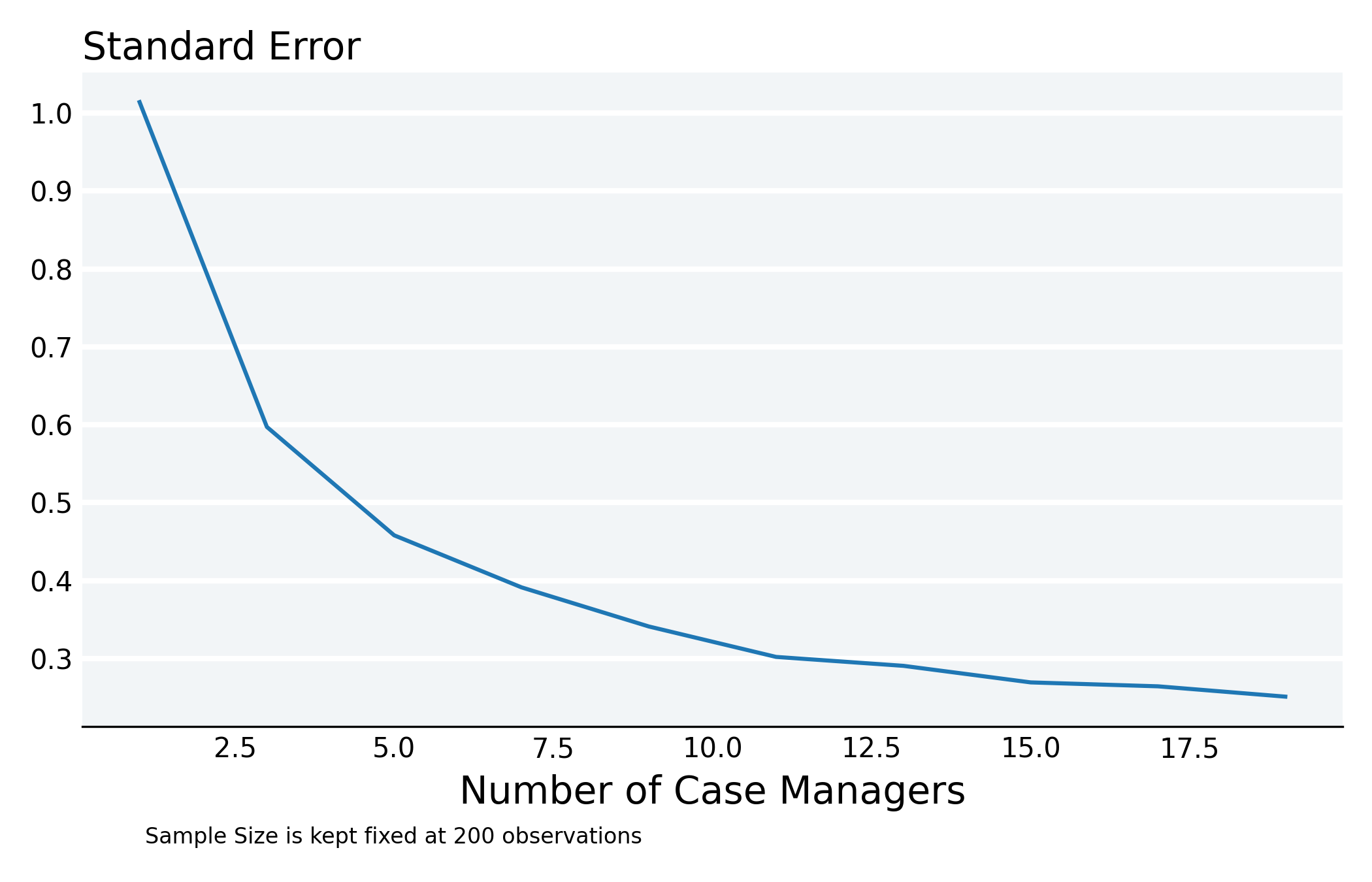Bergman et al. (2023)
The economics of Housing & Homelessness
How would you frame this paper?
What mechanism would you like to have seen explored further?
What is an alternative identification strategy?
What would scaling this experiment look like?
Standard Discussion Questions
Reflections
Do the benefits of High Opportunity Areas translate to families who only move because of the CMTO support?
-This isn't meant to be critical of the program
-It's natural to wonder how these families will fare if the support is removed
'Mona, a Hispanic mother who moved to Bellevue, said “[the navigator] was on top of everything [for] me. If it wasn’t for her, I
honestly think I would have lost my Section 8 because nobody was willing to give us an opportunity.”
Are Preferences Constrained?
"Among treated families who moved to high-opportunity areas, 31% reported that their motivation to move to a higher-opportunity area was amplified by the CMTO program."
Could AI Replace Housing Navigators?
"CMTO’s success with landlords appears to have stemmed not primarily from financial incentives but from one-on-one relationship building, clearer communication, and the provision of
relevant resources when needed on a case-by-case basis"
Is Greatness Exponential?
The Authors note:
"The general lesson may be that having a highly motivated case worker support each family in overcoming the barriers they face can help them make much more effective use of housing assistance programs (and perhaps other public programs)."
It would have been interesting to plot outcomes by Housing Navigator
THe Essence of the Paper
Motivation
Reasons for not moving
Family & Communities
Shorter Commutes
Greater Diversity
Lack of Information about benefits of moving
Housing search process difficulties
liquidity issues, lack of available units
Results
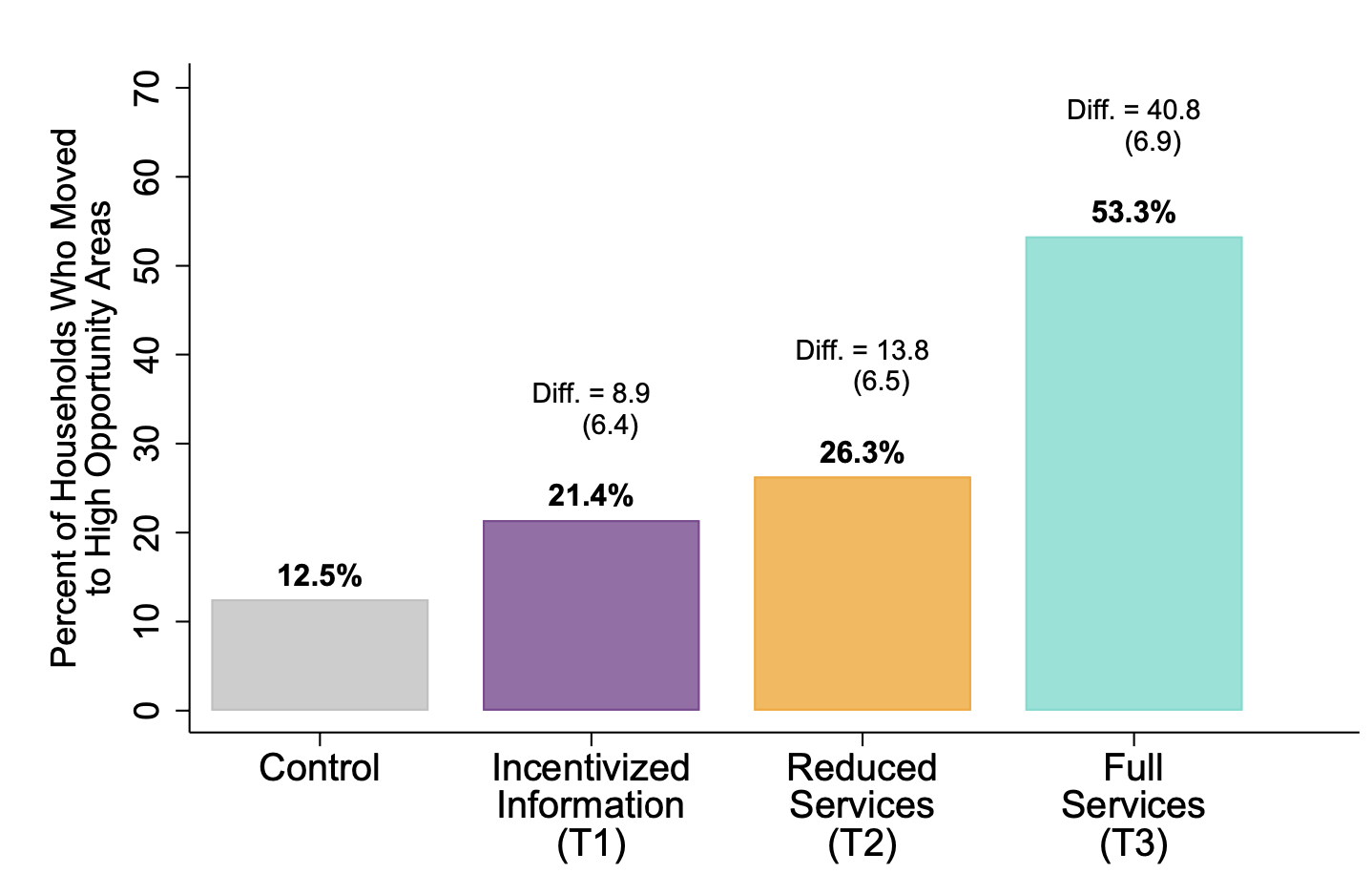
"We conclude that many low-income families do not have a strong preference to stay in low opportunity areas; rather, barriers to moving to high-opportunity areas play a central role in explaining neighborhood choice and residential sorting patterns."
"customized, high-intensity services provided by the housing navigators during the housing search process appear to be necessary to the program’s success in changing where families choose to live"
Not surprising, but it's interesting
B)
A)
Background
The Who
46% Major Health Problems
29% Domestic Violence
19% Previously Evicted
50% Previously Homeless
78% Doubled Up
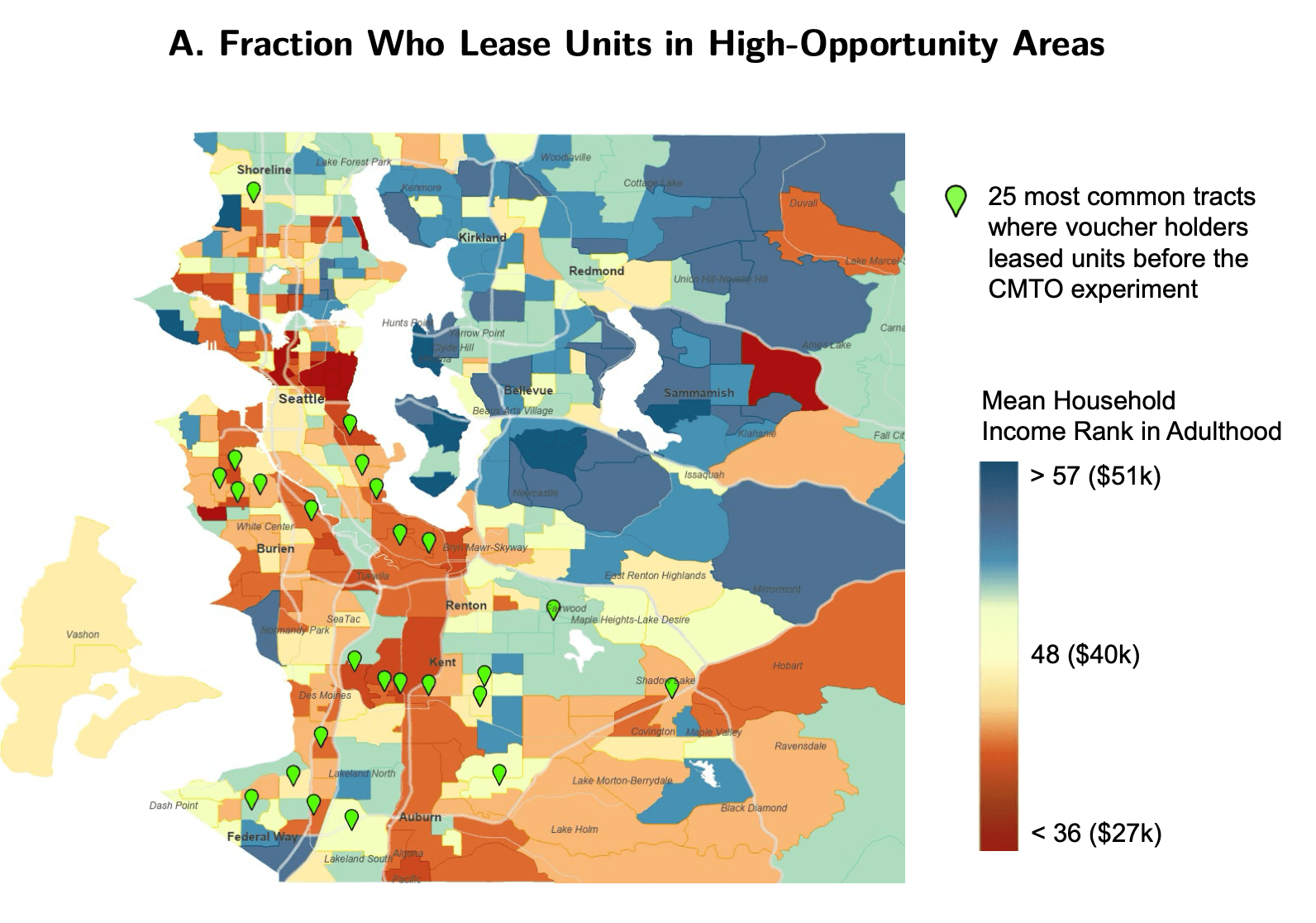
Historically, about 12% of HCV have rented up in a High Opportunity Neighborhood
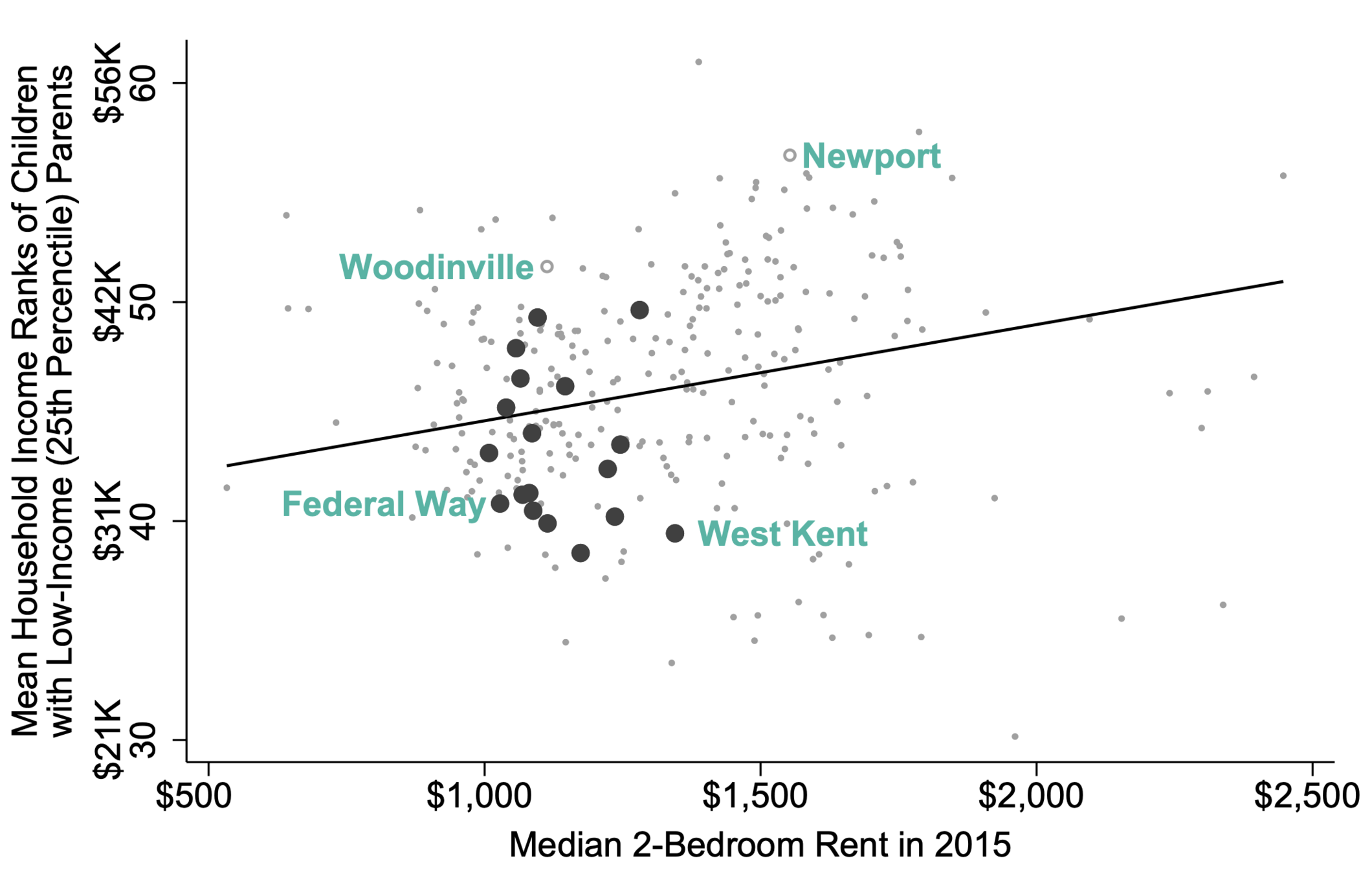
"One reason this might be the case is that Seattle and King County offer higher payments for more expensive neighborhoods, allowing families to access more expensive units in high-opportunity areas. Understanding the tradeoffs that would be induced by CMTO-type programs in a setting without tiered payment structures is an interesting direction for further work."
Tiered Payment Structure
First RCT
Housing Navigators
Customized housing search assistance
Landlord Engagement
Short term financial assistance
On average, spent about 6 hours working with each family
Landlords offered insurance fund (above security deposit)
Financial Assistance for security deposits and application fees (Max Eligible: $3500 financial assistance + $1500 labor costs)
Average Cost of Support: $2670
Stayed in touch with tenants upto 2 weeks after lease-up
Conducting inspections themselves
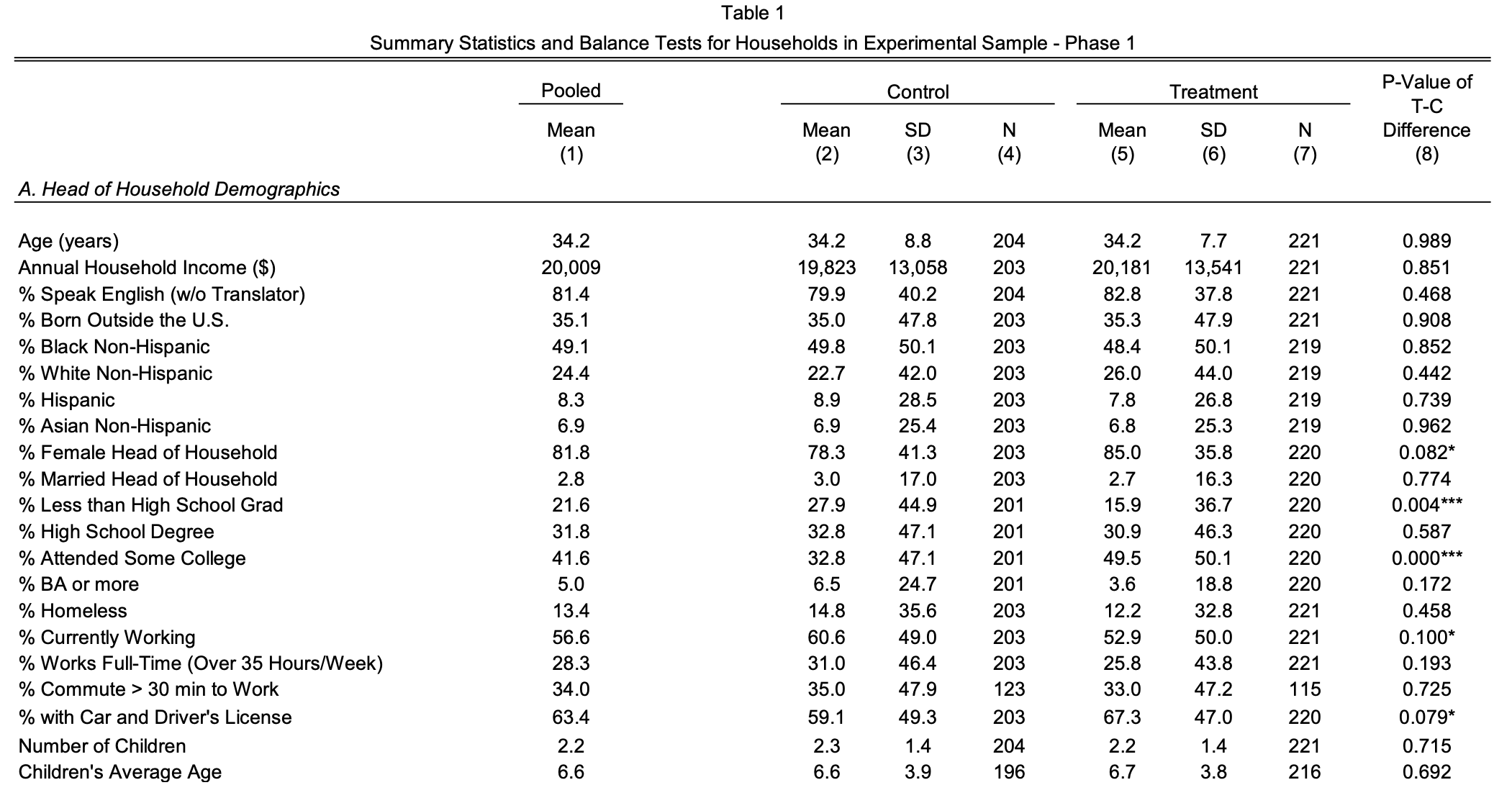
Currently Working | Some College | Less than High School Grad | Driver License
Noticeable Differences between Groups
Would Leave Neighborhood if Got Voucher (50%)

Unsatisfied with Any Child's Current School (15%)
% Primary Motivation to Move is Schools (42.5%)
Neighborhood Related Questions
Not Majority Black Census Tracts (11.5%)
Very Little Extreme Poverty (2.6%)
Mean Household Income Rank is meant to increase by 70%

Original Neighborhood
Regression Specification
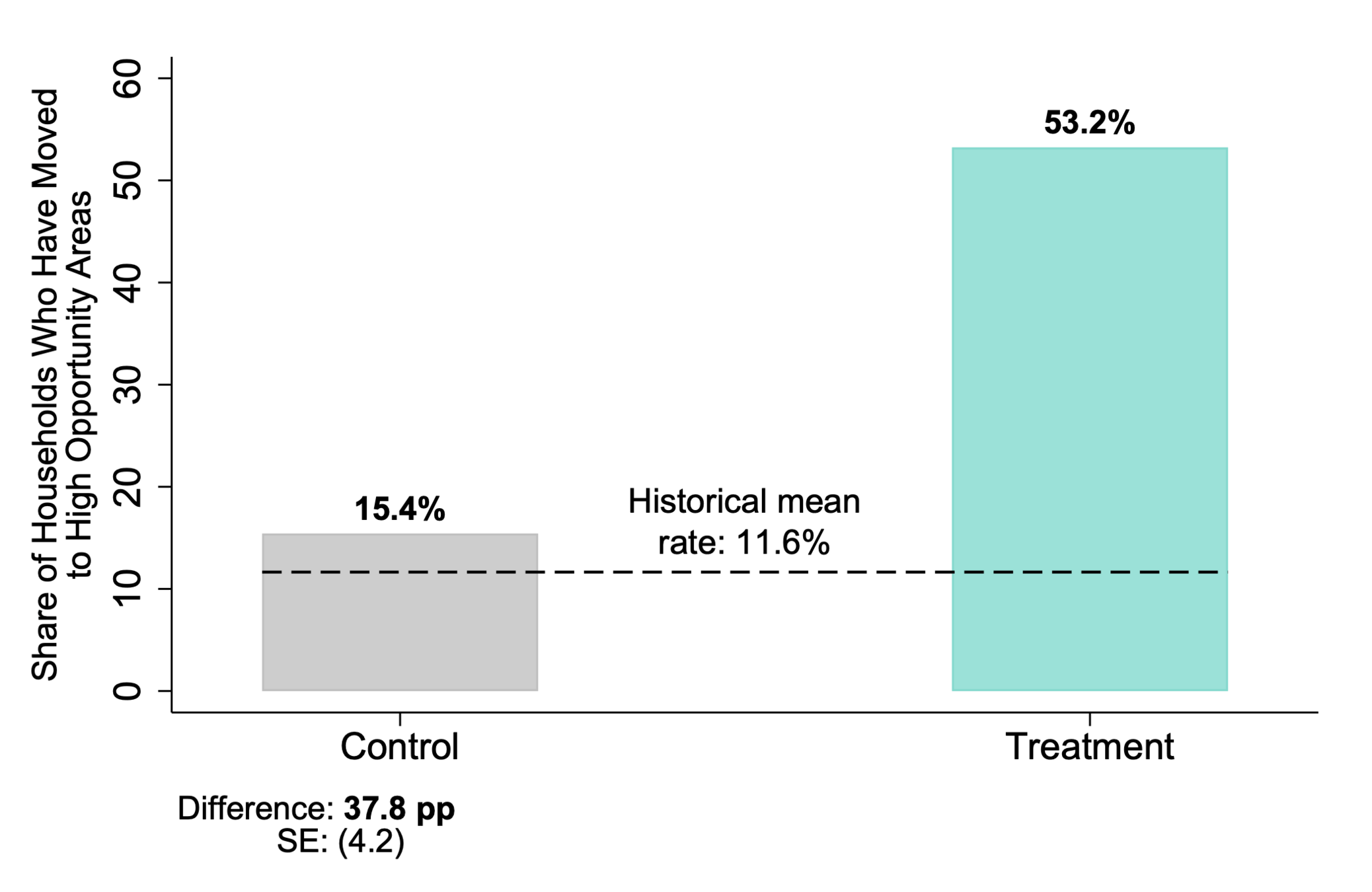
No Crowd Out
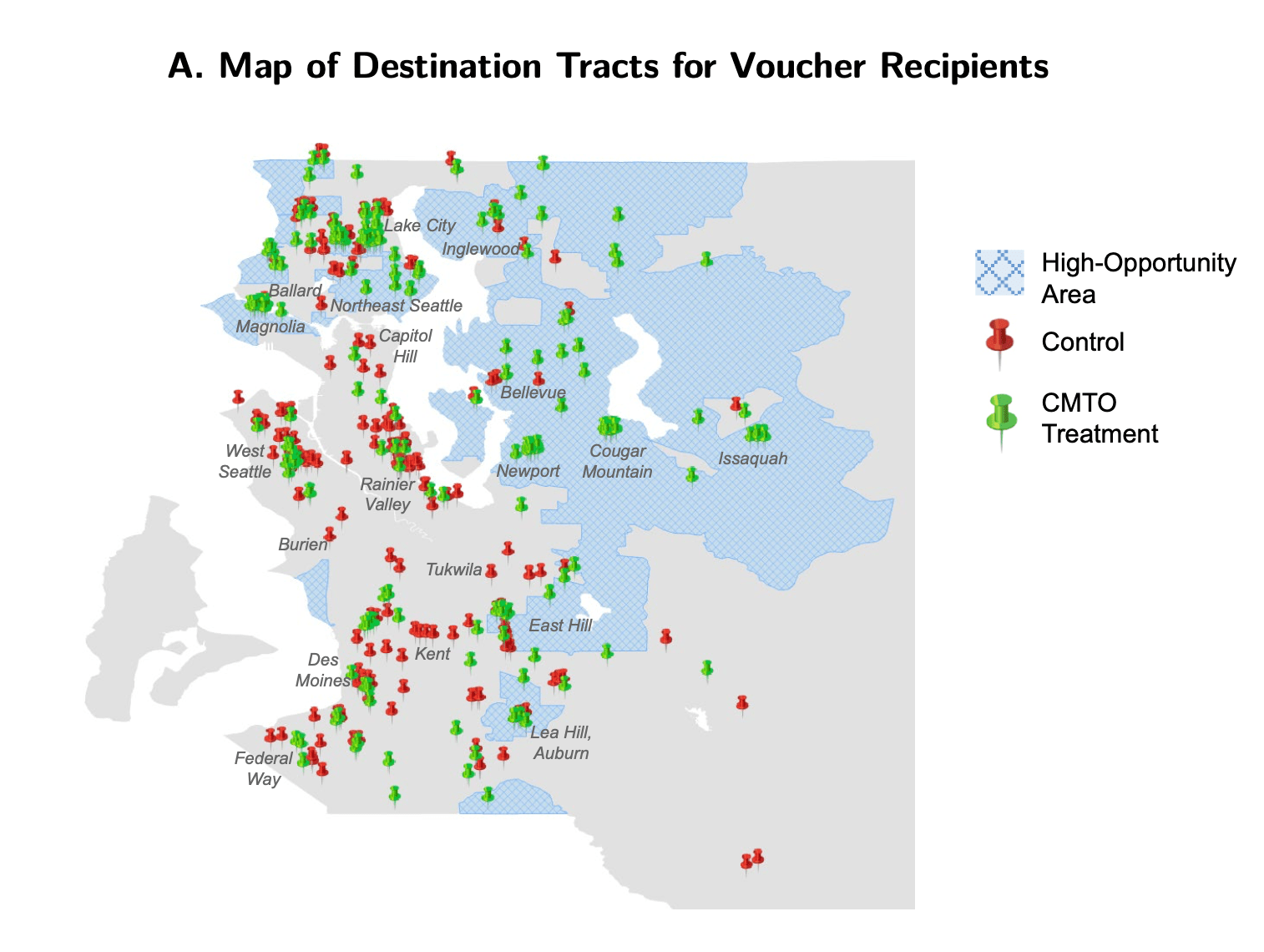
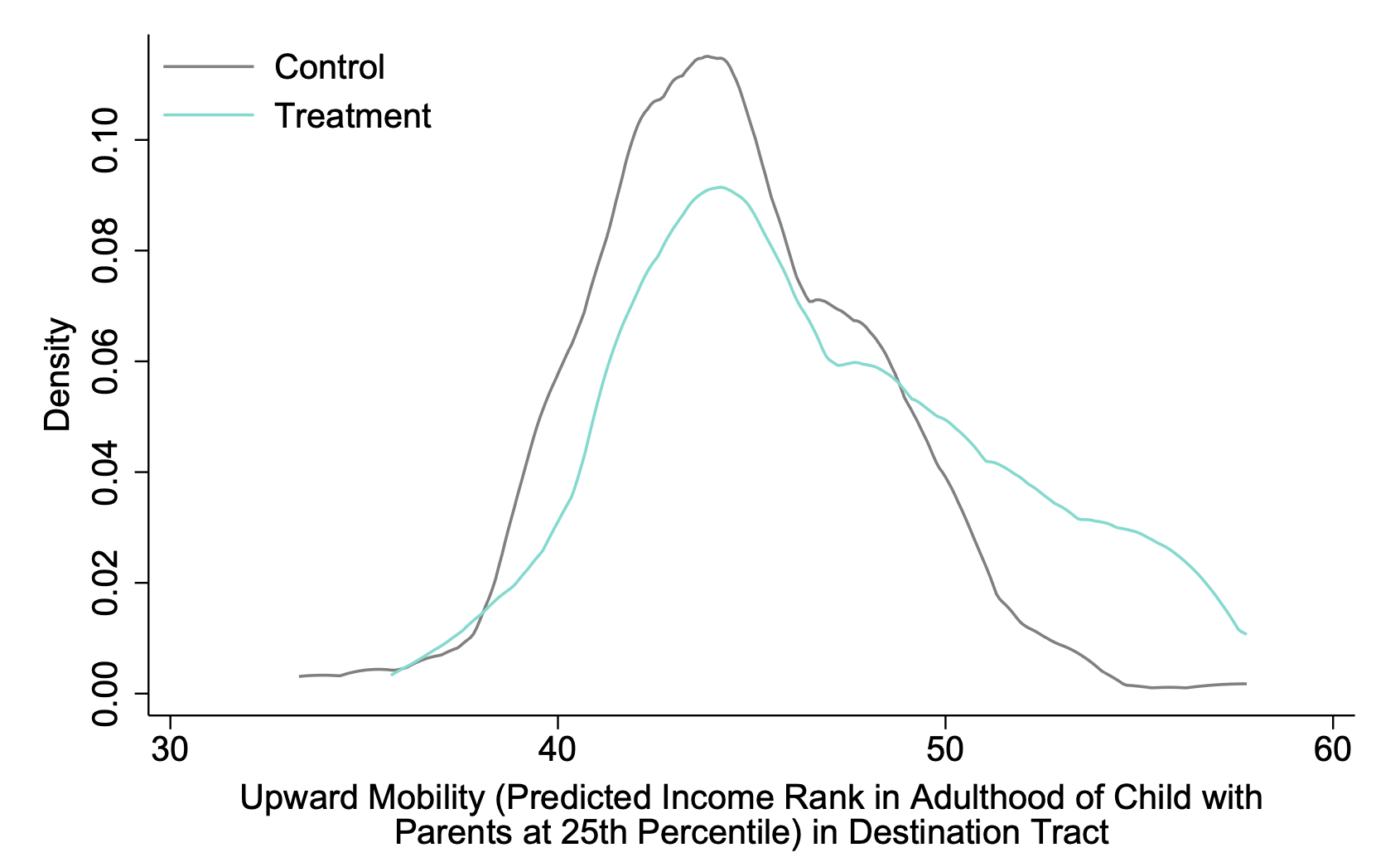
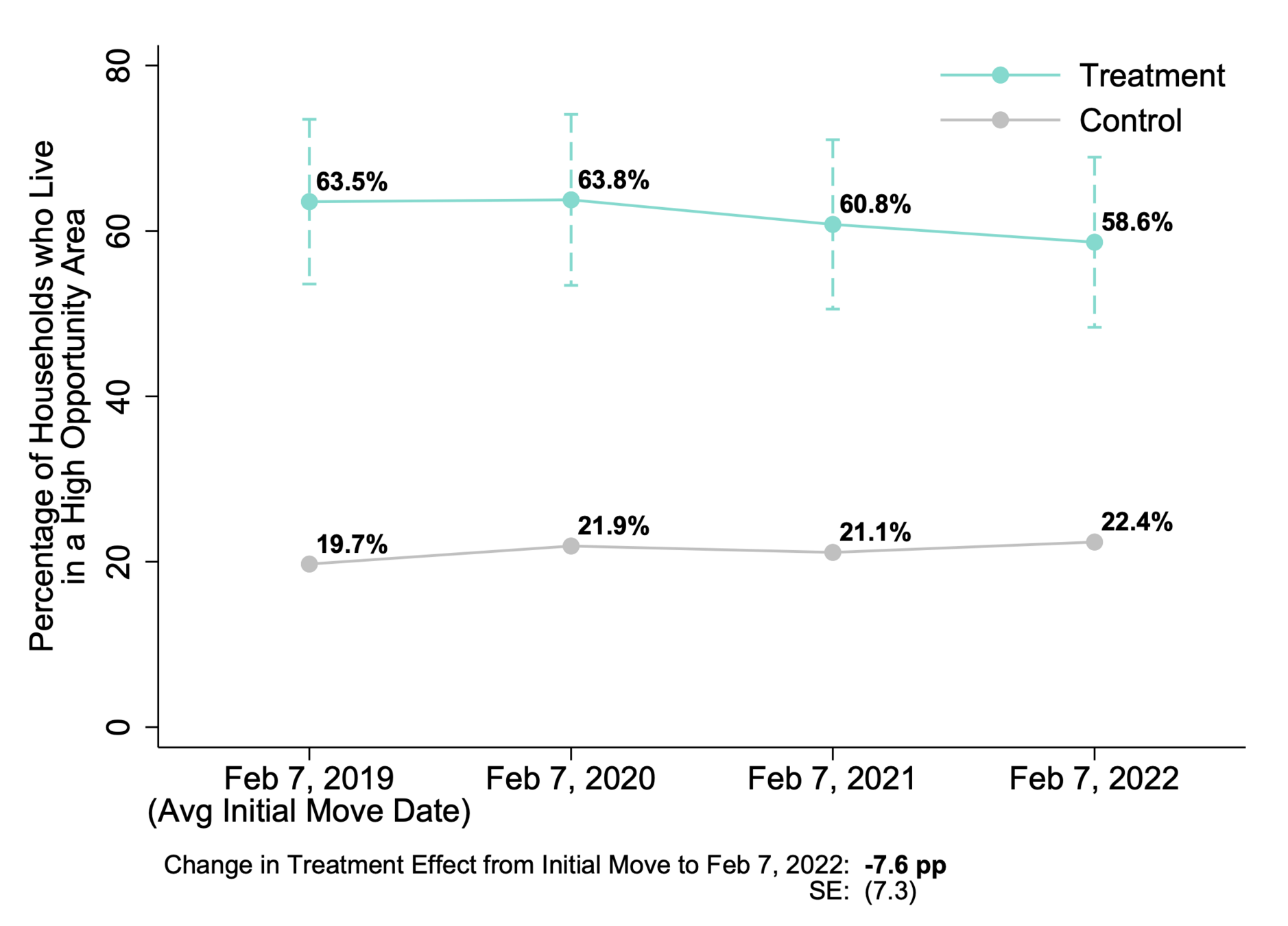
To what extent does Covid affect these results?
Second RCT

Emotional Support and Communication
Increase Motivation to Move to Opportunity
Streamlining the Search Process
Landlord Brokering
Short-Term Financial Assistance
Mechanisms
Tenancy Support
Less Risk for Landlords
"The recruitment and relationship building the CMTO navigators also led landlords to relax traditional tenant screening criteria (e.g., credit scores, source of income) that often prevented families from leasing up in high opportunity areas"
Applied Econometrics
